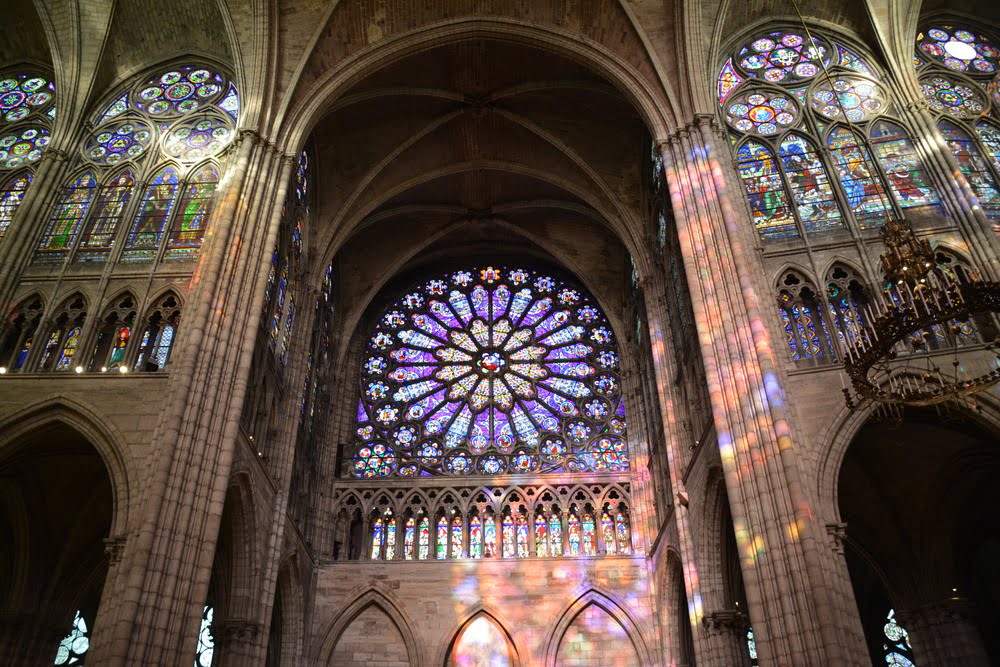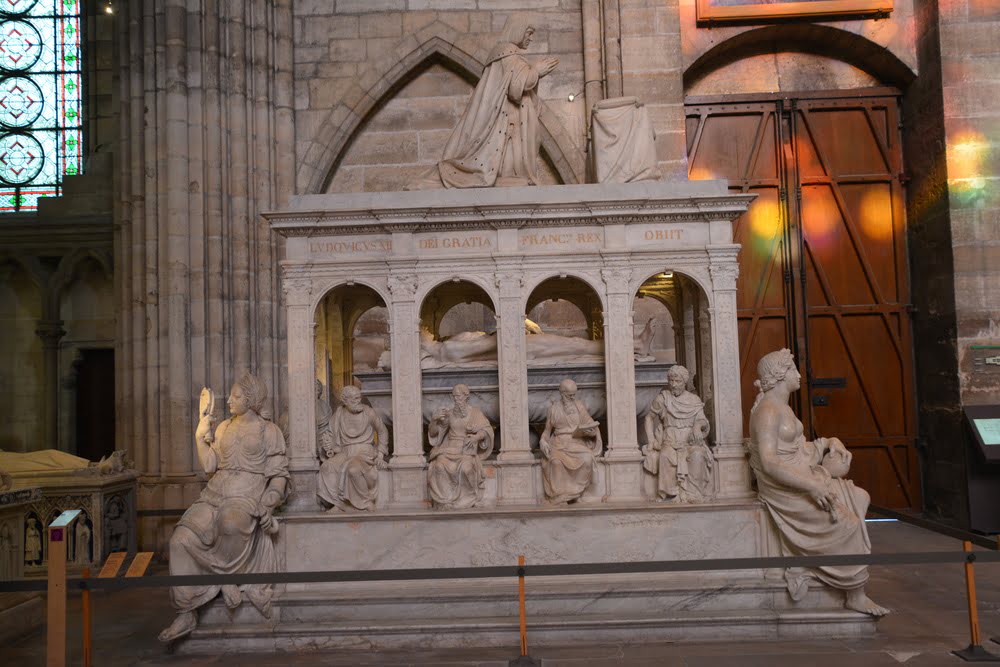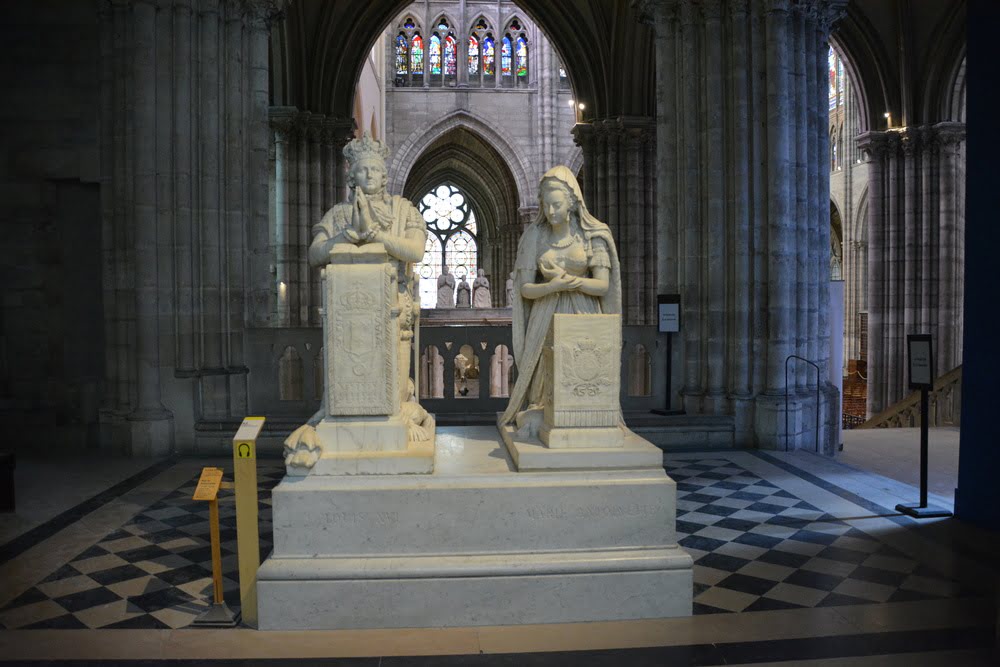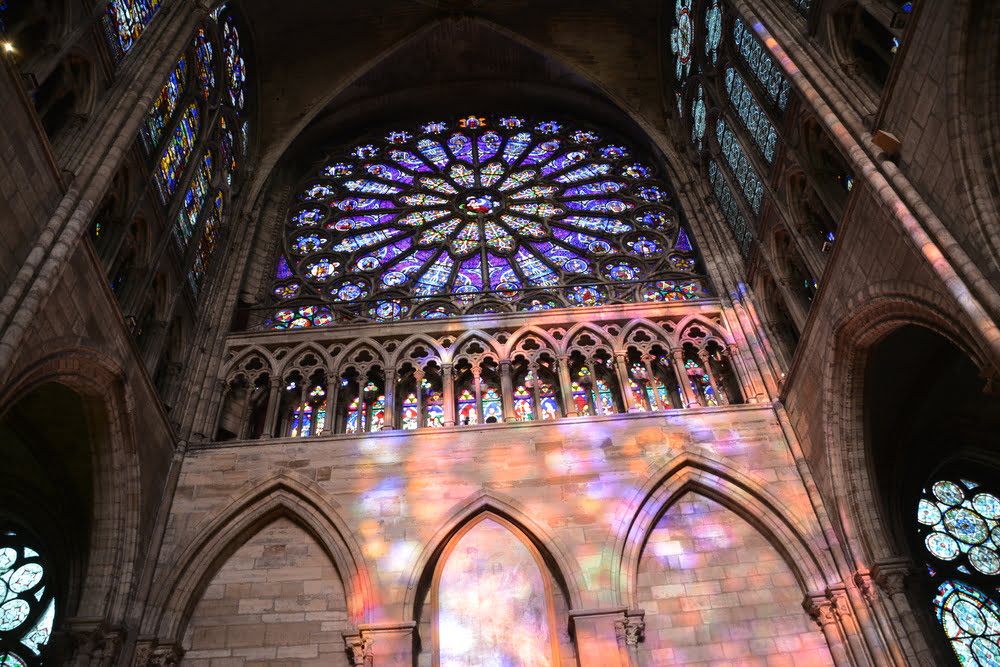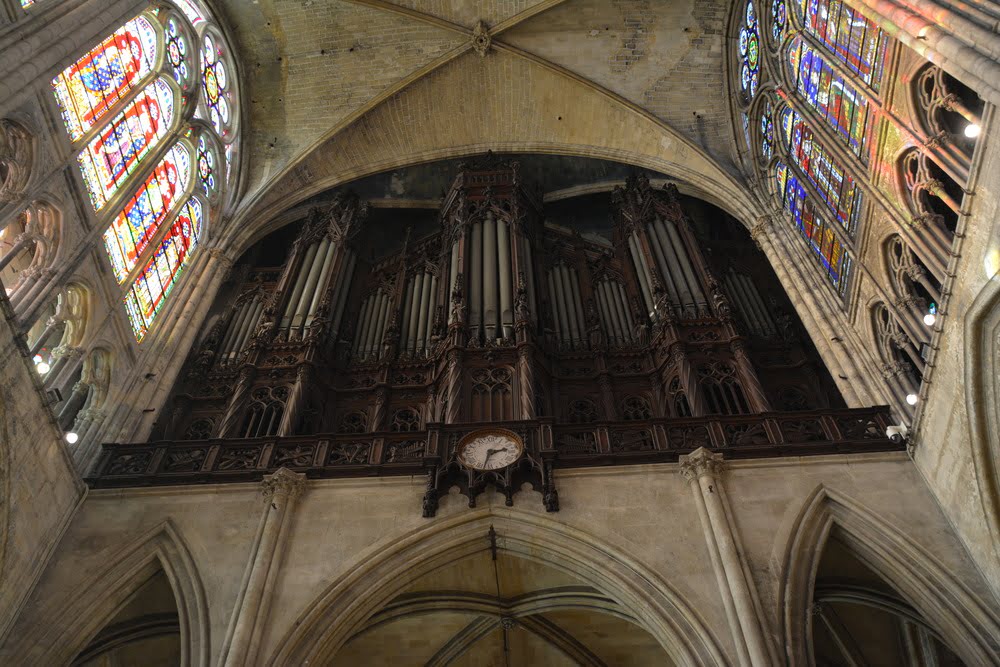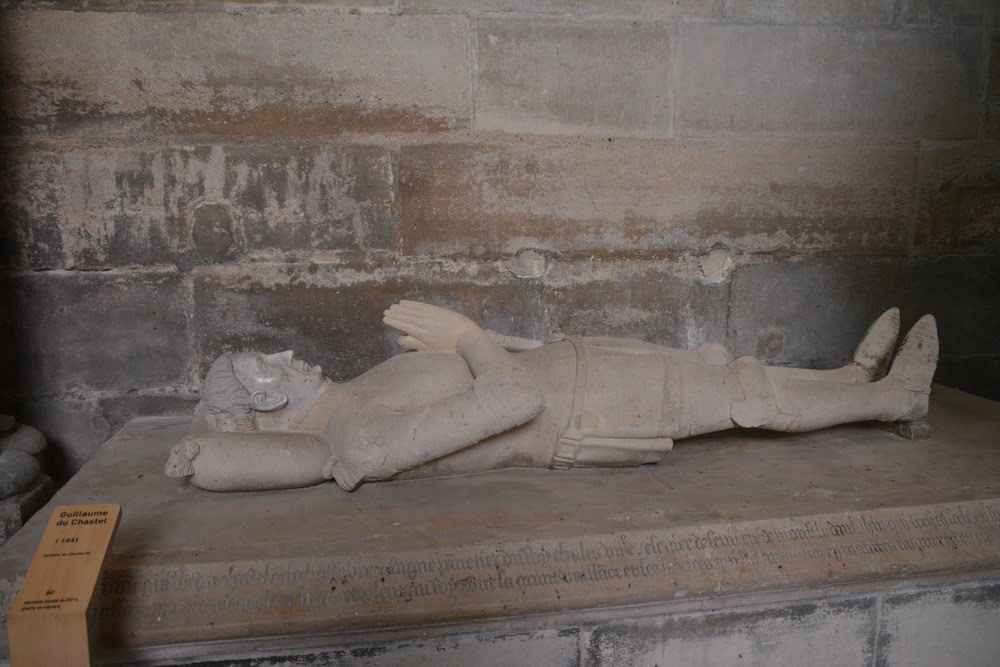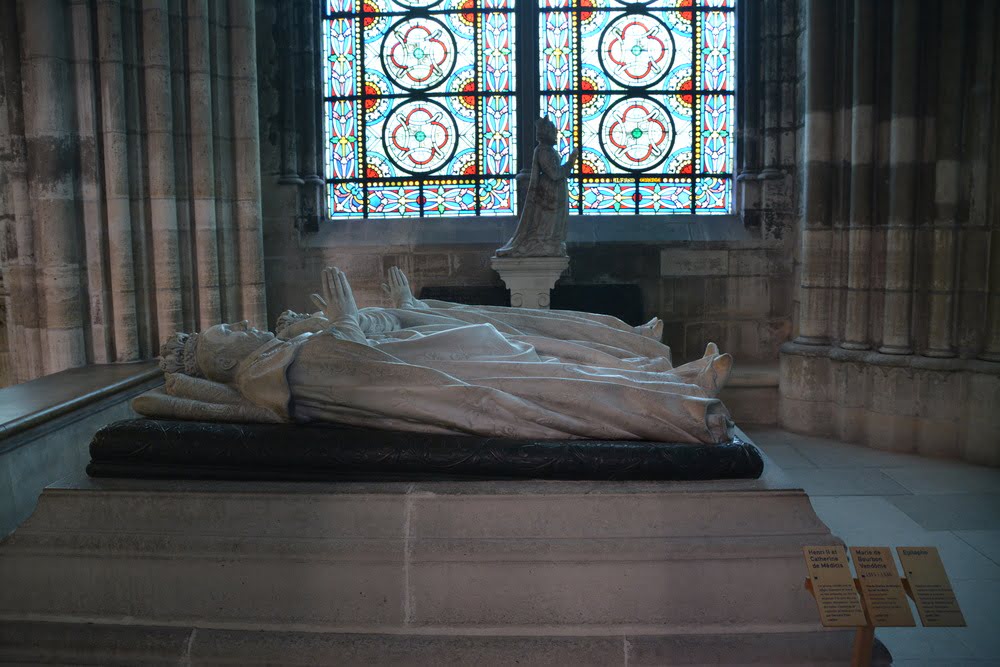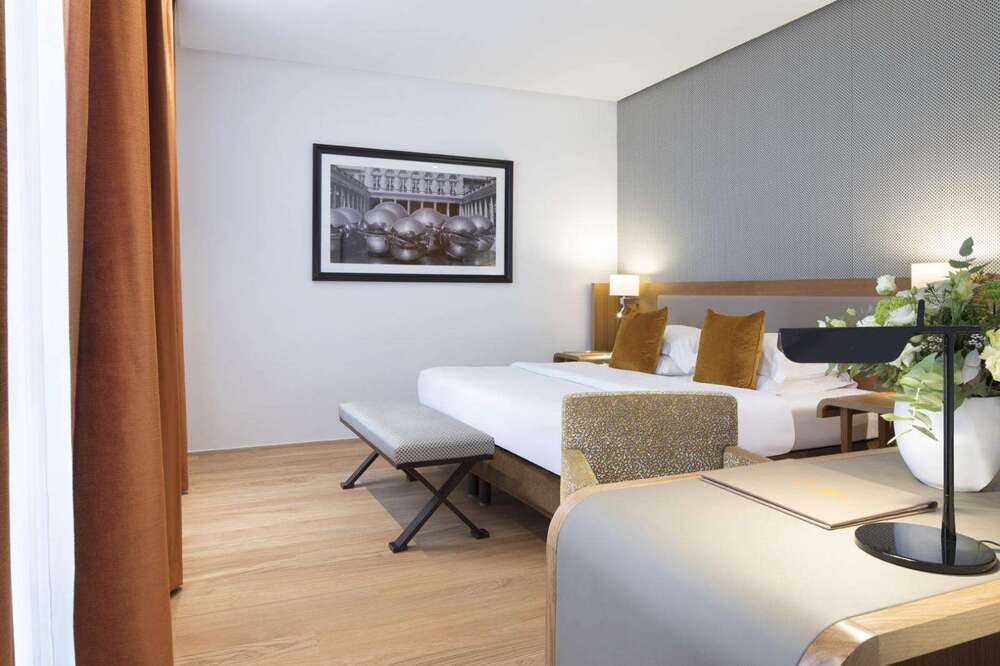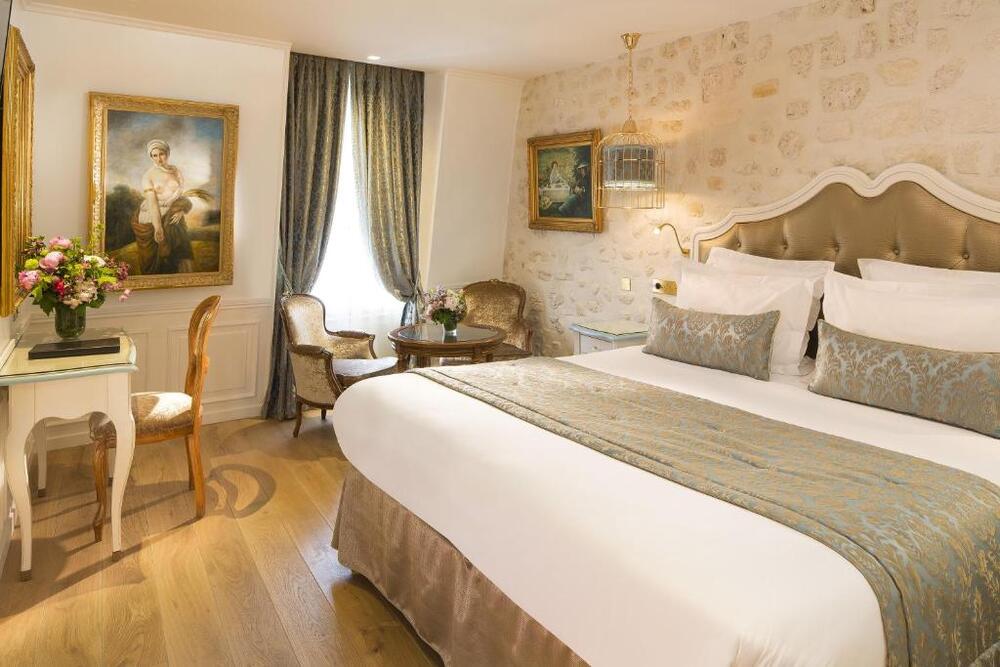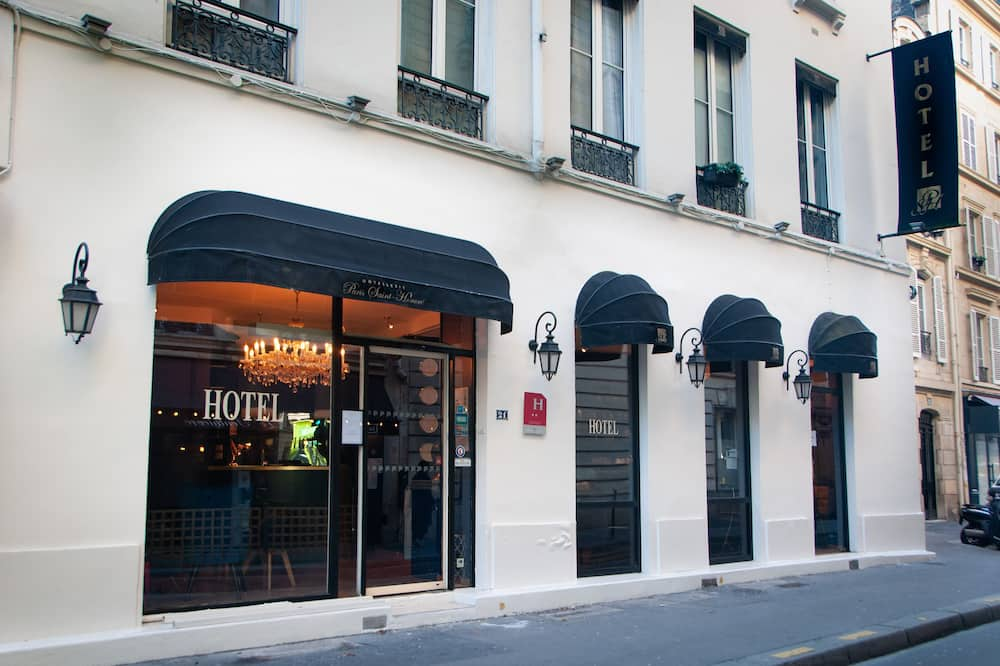The old Royal Abbey of Saint Denis has been for centuries the headlight of artistic, political and spiritual history of the Frank world.
Its abbey-church, christened as a basilica from the origin, rises on the very site of a Gallo-roman cemeterry, burial place of Denis, martyrized around 250. His own history was embellished by legends from Vth until XIVth century.The most famous being the one presenting him carrying his severed head, from Montmartre, place of his martyrdom, to Saint Denis his burial place, at the very spot where several edifices were dedicated to him from Vth until XIIIth century.
Beyond a carolingian crypt remnant of the edifice consecrated by Carolus Magnus in 775, the Basilica keeps the memory of two major buildings determining for the evolution of religious architecture. The Abott Suger, early humanist, tireless traveller, kings counselor and fine politician rebuilt the two ends of the building from 1135 to 1144. The choir creates a true hymn to light, as a manifesto of new gothic art. The double deambulatory and his surrounding chapels create an uninterrupted crown of light thanks specially to the split of the bays in each chapel.
In 1231, Saint Louis orders the edifice’s largest part to the famous architect Pierre de Montreuil.
Nicknamed because of its brightness, the “Lucerna”, the lantern, the XIIIth century basilica is a novelty notably by the new use of fasciculated pillars (pillars made of bundles of small columns), by the openwork triforium and the immensity of the roses illuminating a transept of exceptionnal width intended to receive the royal tombs.
Place of memory, since high Middle-Age, the Dyonisian monastery linked its destiny to the monarchy asserting itself little by little as the privileged burial place of the royal dynasties under cover of Saint Denis cult. Dagobert is the first king to be buried there. Several Carolingians will be interred there amoung them, Charles Martel, Pepin the Short and Charles the Bold. It is only after Hugues Capet that almost all the Capetians will be buried at St Denis. 42 kings, 32 queens, 63 princes and princesses, 10 great men of the kingdom were laid there to rest. With more than 70 Renaissance monumental tombs, the royal necropolis of the Basilica asserts itself today as the most important group of funerary sculptures from XIIth until XVIth century.
The One hundred years war, (against England), the religions wars (Protestants U.S., Catholics), political troubles contribute to the decline of the Royal Abbey of St Denis long before the Revolution.
In 1793, revolutionnaries attack the symbol of monarchy. The tombs are disurontled, some destroyed. Exhumed bodies are thrown into common graves. The Basilica escapes total destruction.
In 1806, Napoléon Ist commanded the rehabilitation of the edifice. Then Louis XVIII handed back its necropolis function to the Abbey church.
The rehabilitation works go on all along the XIXth century directed by the architects Debret then Viollet-le-Duc from 1846. The outrage of centuries didn’t affect the evocative power of memory in this original landmark of French nation, remaining as a jewel case for light.
Location : 1 Rue de la Légion d’Honneur 93200 Saint-Denis
Phone : 01 48 09 83 54
How to get there :
- Railways / RER : RER D, station : Saint-Denis
- Motorway : A1 – A86, exit : centre-ville, la Plaine Stade de France
- Road : Nationales : 1, 14, 186, 214
- Public transport : Subway line 13, stop : basilique de Saint-Denis
Official website : https://www.saint-denis-basilique.fr

